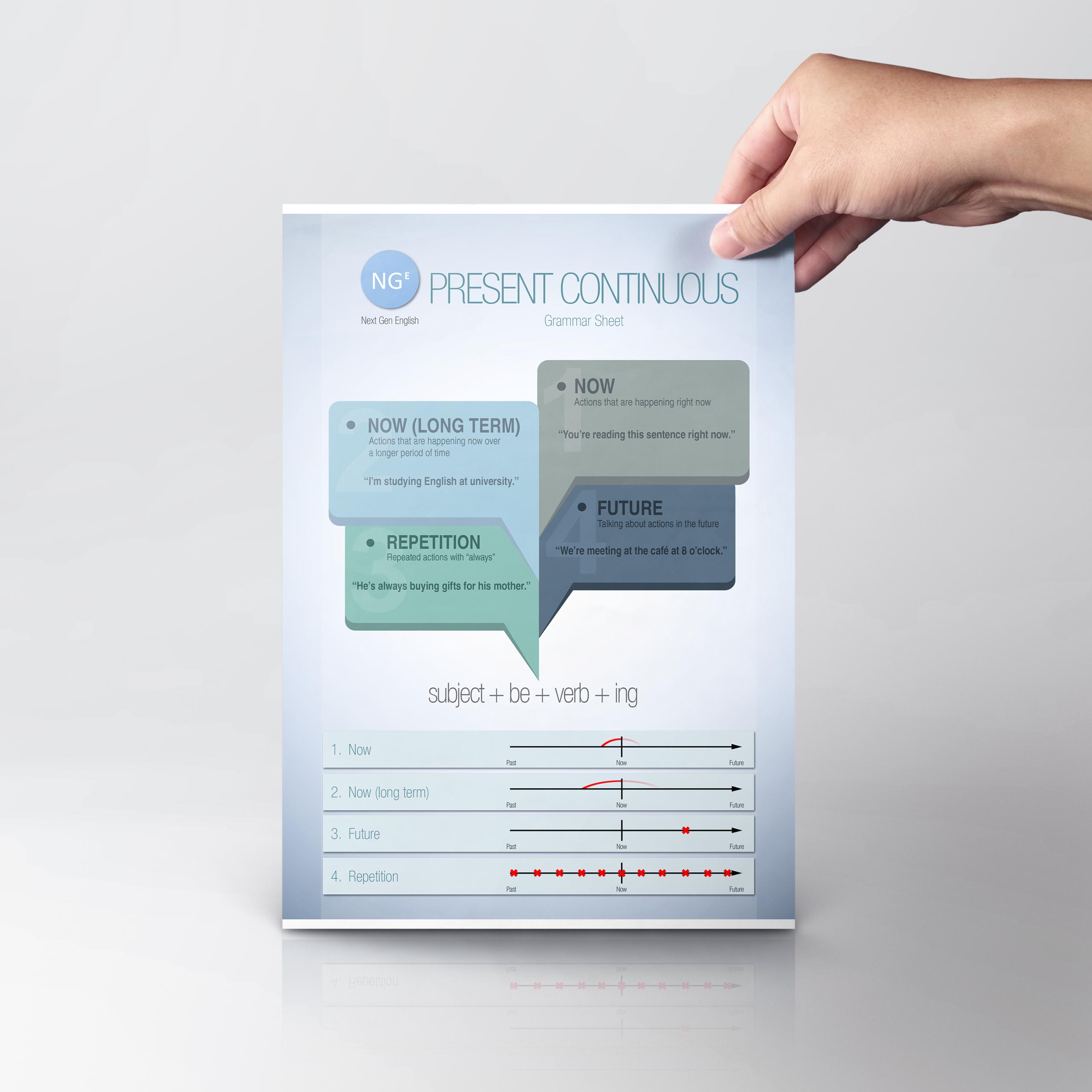Present Continuous
Present Continuous
What is the present continuous and how do we use it?
There are four main uses of the present continuous tense in English.
We can use the present continuous:
- For actions that have started, and are still in progress as we speak. (right now)
- For actions that have started, and are still in progress as we speak. (long term)
- To talk about the future.
- To talk about repetition and/or irritation.
Usage 1:
- For actions that have started, and are still in progress as we speak.
(right now)

Positive: subject + be + verb + ing
Example: I‘m listening.
Negative: subject + be + not + verb + ing
Example: I‘m not listening.
Question: be + subject + verb + ing
Example: Are you listening?
Usage 2:
- For actions that have started, and are still in progress as we speak.
(long term)

Positive: subject + be + verb + ing
Example: She‘s saving up for a new computer.
Negative: subject + be + not + verb + ing
Example: She isn’t saving up for a new computer.
Question: be + subject + verb + ing
Example: Is she saving up for a new computer?
Usage 3:
- To talk about the future

Positive: subject + be + verb + ing
Example: They‘re coming to my house at 7:00 to watch the match.
Negative: subject + be + not + verb + ing
Example: They‘re not coming to my house to watch the match.
Question: be + subject + verb + ing
Example: Are they coming here at 7:00 to watch the match?
Usage 4:
- To talk about repetition and/or irritation

Positive: subject + be + always + verb + ing
Example: He‘s always checking his phone during meetings.
Negative: subject + be + not + always + verb + ing
Example: He isn’t always checking his phone during meetings.
Question: be + subject + always + verb + ing
Example: Is he always checking his phone during meetings?





